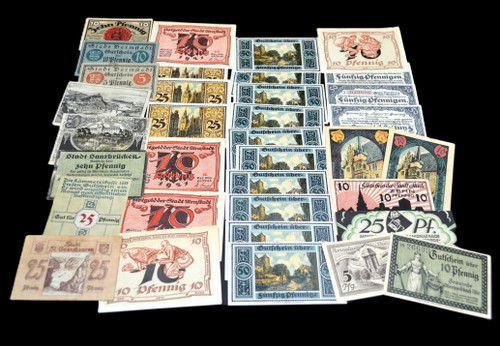1923 DIRLEWANG 1 Trillion Mark RARE Inflation Notgeld Banknote Germany Collectible
Description:
The 1923 Dirlewang 1 Trillion Mark Inflation Notgeld Banknote stands as a profound testament to the hyperinflation crisis that devastated the Weimar Republic, rendering it an XX-RARE collectible from one of the most tumultuous periods in German history. Issued in Dirlewang, this notgeld is a striking example of emergency currency, circulated by localities in an effort to manage the economic instability that characterized post-World War I Germany.
Design and Features: The banknote's design is expected to be emblematic of Dirlewang's local culture and identity, infused with symbolic representations reflecting the economic despair and hope of the era. Notgeld pieces are renowned for their artistic value, often featuring elaborate illustrations that narrate stories, folklore, or the civic pride of the issuing community. This 1 Trillion Mark note likely includes unique visual elements, making it a vivid piece of numismatic art as well as a historical artifact. The "XX-RARE" designation highlights its scarcity, suggesting it possesses distinctive features or was issued in limited quantities.
Historical Significance: Issued at the zenith of the hyperinflation spiral in 1923, this banknote encapsulates a critical moment when the German Mark's value plummeted daily. Dirlewang's issuance of such a high-denomination notgeld reflects the widespread economic strategies adopted by local communities to navigate the dire monetary landscape. This period, marked by economic hardship, social unrest, and political upheaval, led to significant changes in Germany's financial and political systems, making this banknote a key document of historical change.
Collector's Value: As an XX-RARE example of hyperinflationary notgeld, this Dirlewang 1 Trillion Mark banknote holds exceptional value for collectors. Its significance is amplified by its condition, rarity, and the unique story it tells of survival and adaptation in face of economic collapse. Collectors and historians alike treasure such pieces for their insight into the Weimar Republic's hyperinflation era, their aesthetic beauty, and their representation of local resilience in adversity.
















